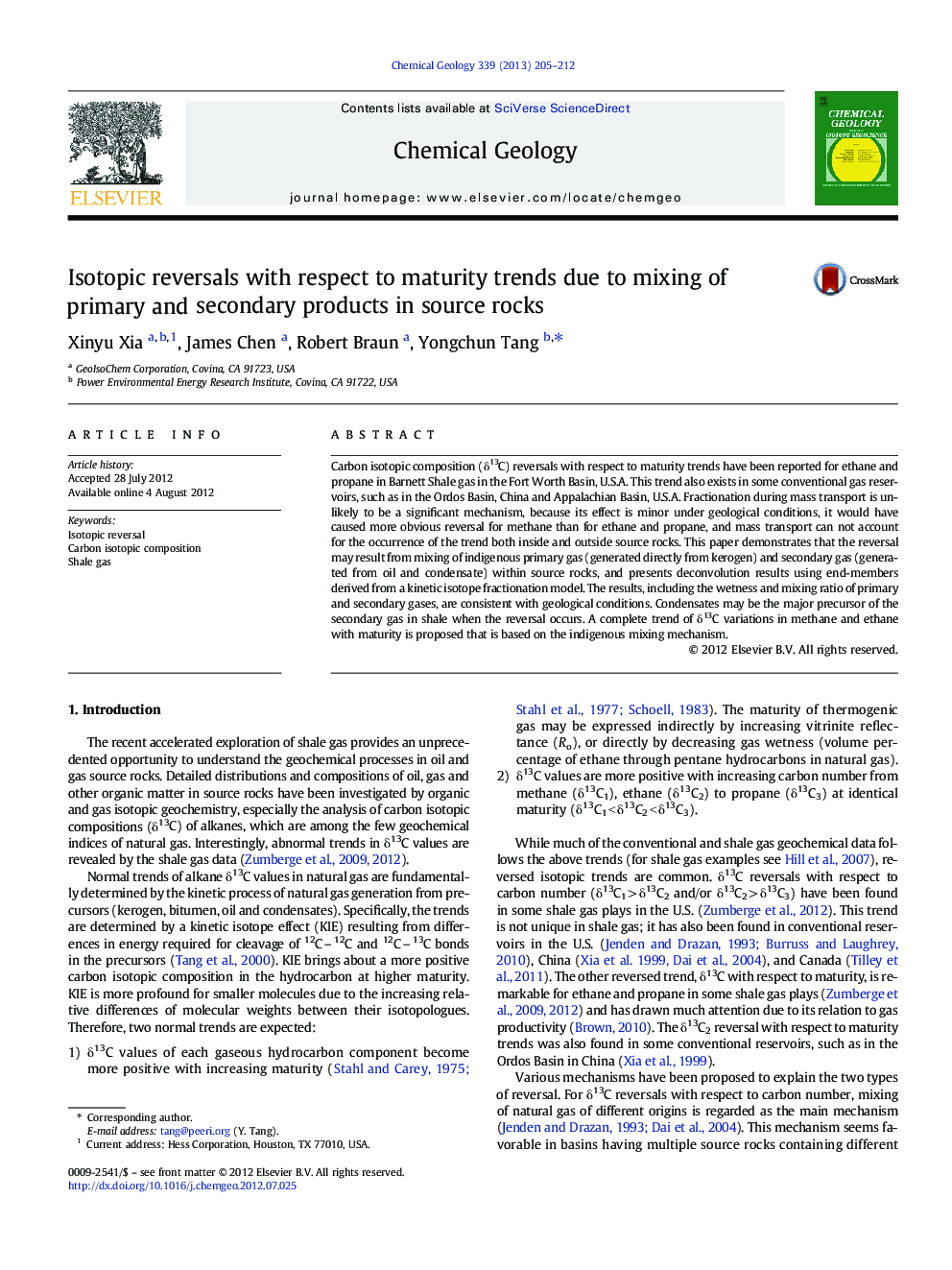| Article ID | Journal | Published Year | Pages | File Type |
|---|---|---|---|---|
| 4699139 | Chemical Geology | 2013 | 8 Pages |
Carbon isotopic composition (δ13C) reversals with respect to maturity trends have been reported for ethane and propane in Barnett Shale gas in the Fort Worth Basin, U.S.A. This trend also exists in some conventional gas reservoirs, such as in the Ordos Basin, China and Appalachian Basin, U.S.A. Fractionation during mass transport is unlikely to be a significant mechanism, because its effect is minor under geological conditions, it would have caused more obvious reversal for methane than for ethane and propane, and mass transport can not account for the occurrence of the trend both inside and outside source rocks. This paper demonstrates that the reversal may result from mixing of indigenous primary gas (generated directly from kerogen) and secondary gas (generated from oil and condensate) within source rocks, and presents deconvolution results using end-members derived from a kinetic isotope fractionation model. The results, including the wetness and mixing ratio of primary and secondary gases, are consistent with geological conditions. Condensates may be the major precursor of the secondary gas in shale when the reversal occurs. A complete trend of δ13C variations in methane and ethane with maturity is proposed that is based on the indigenous mixing mechanism.
► Isotope reversal vs. carbon number and maturity exist in shale and conventional gas. ► Reversal vs. maturity can be explained with mixing of primary and secondary gas. ► End-members derived from kinetic isotope fractionation model. ► Deconvoluting gives reasonable wetness and mixing ratio. ► Complete trend of isotope versus maturity summarized.
